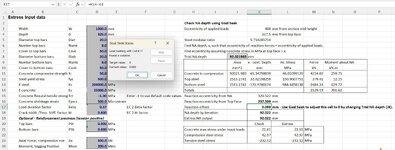mte12
Structural
- Mar 1, 2022
- 141
I've been looking for a method to estimate stress and strain in reinforced concrete, when subject to moment and axial load, particularly bars in tension. This is at service loads which may not necessarily be at ultimate state.
Is there a prescriptive method available to follow?
Is there a prescriptive method available to follow?

